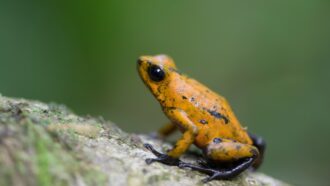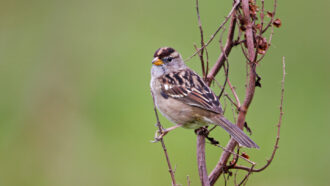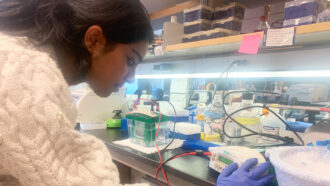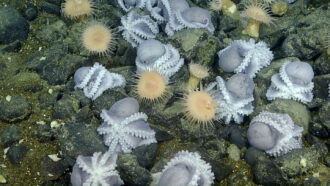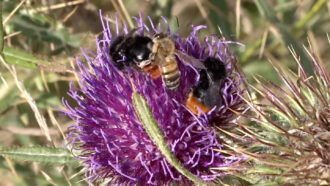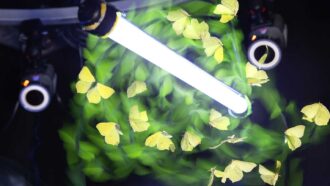Let’s learn about whales and dolphins
These cetaceans are mammals that live in the water
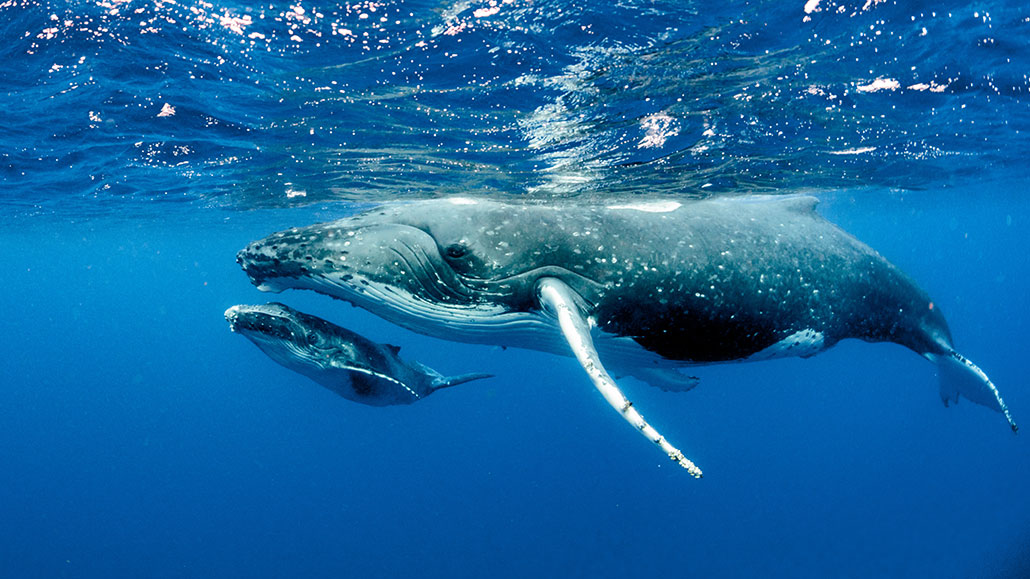
A huge humpback whale and her baby swim near the sea surface. These are among the whales that filter their food from the water using baleen plates.
UWPhotog/iStock/Getty Images Plus
Whales, dolphins and porpoises all live in water, but they’re not fish. They’re water-dwelling mammals known as cetaceans (Seh-TAY-shuns). This group includes the largest animals on Earth — blue whales — which can grow up to 29.9 meters (98 feet) in length. Most cetaceans live in the ocean, but there are a few species that live in freshwater or brackish water (water that is salty, but not as salty as the ocean). Cetaceans don’t have gills as fish do. To get the oxygen they need, these mammals breathe in air through structures called blowholes.
Cetaceans are split into two groups based on what and how they eat. Toothed whales — such as sperm whales, orcas (killer whales), dolphins, narwhals and porpoises — all have teeth that help them catch prey. They eat fish, squid and other large critters. Orcas have been known to eat penguins, seals, sharks and other whales. Most species of toothed whales can use echolocation to find prey.
Baleen whales lack teeth. Instead, plates of baleen line their mouths. That baleen is made of keratin — the same stuff as hair — and lets the whale filter krill and other small invertebrates from the water to eat. Humpback whales in Alaska, though, have figured out they can get a free meal of tiny salmon by hanging out at fish hatcheries.
Scientists have had to get creative when it comes to studying these animals. One group figured out how to weigh a whale using drone imagery. Others use acoustic tags and other techniques to study the social lives of whales and dolphins. And sometimes scientists just get lucky. Like when researchers driving an underwater robot came across a decomposing whale at the bottom of the ocean — and found an entire community feasting on the dead.

Educators and Parents, Sign Up for The Cheat Sheet
Weekly updates to help you use Science News Explores in the learning environment
Thank you for signing up!
There was a problem signing you up.
Want to know more? We’ve got some stories to get you started:
Why some whales become giants and others are only big Being big helps whales access more food. But just how big a whale can get is influenced by whether it hunts or filter-feeds. (1/21/2020) Readability: 6.9
The social lives of whales New tools are giving scientists an unprecedented glimpse into the behaviors of whales and dolphins. And these new data are upending long-held assumptions. (3/13/2015) Readability: 7.0
Whales get a second life as deep-sea buffets When a whale dies and sinks to the seafloor, it becomes a feast for hundreds of different types of creatures. (10/15/2020) Readability: 6.6
Explore more
Drones help scientists weigh whales at sea
Whales feast when hatcheries release salmon
Killer whale blows raspberry, says ‘hello’
Sperm whales’ clicks suggest the animals have culture
Whales echolocate with big clicks and tiny amounts of air
Whale blowholes don’t keep out seawater
Activities
Learn more about whales and dolphins through crossword puzzles, coloring sheets and other activities from Whale and Dolphin Conservation. All of the activities are presented in English — and Spanish. French and German translations also are available.
